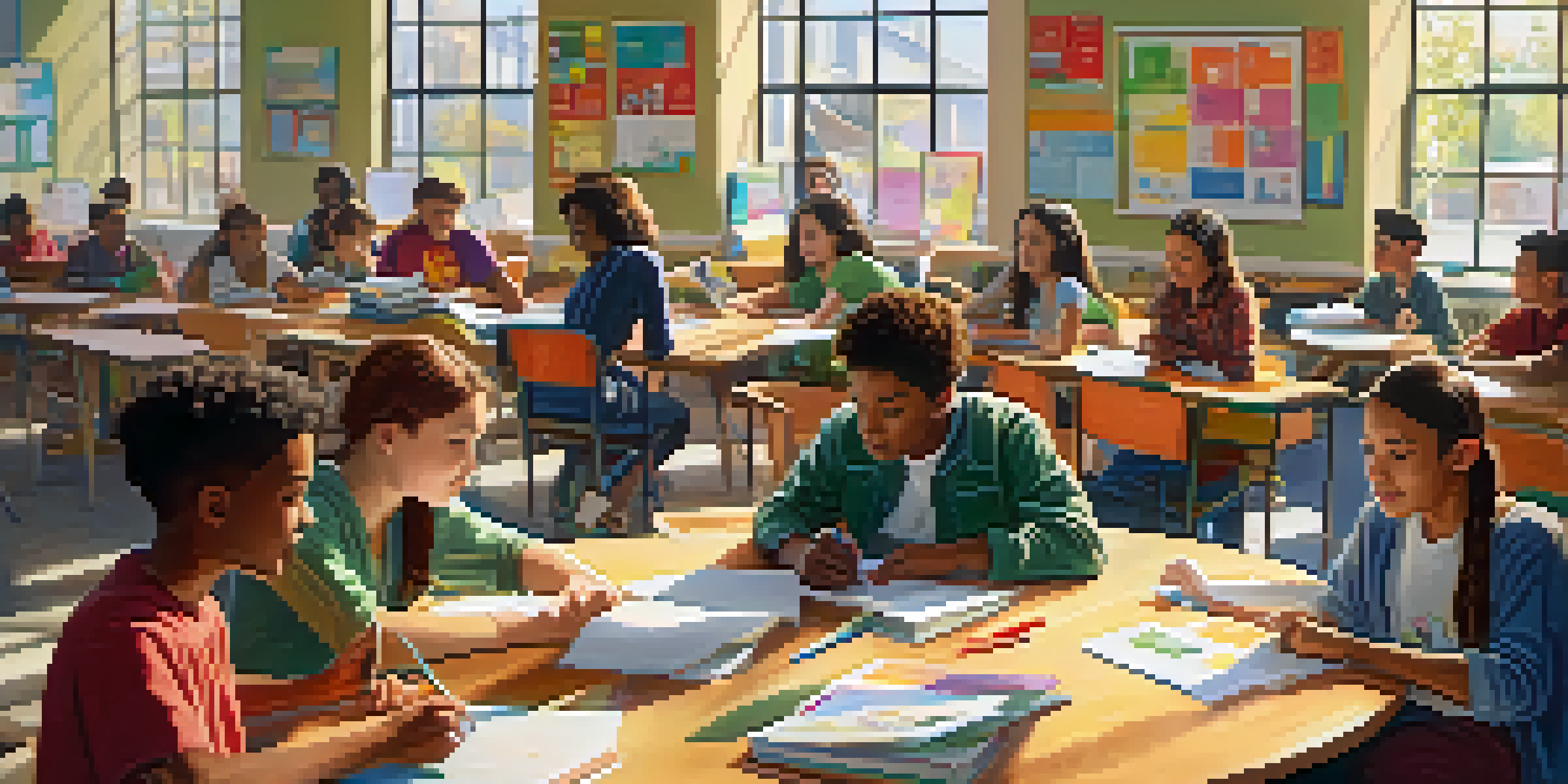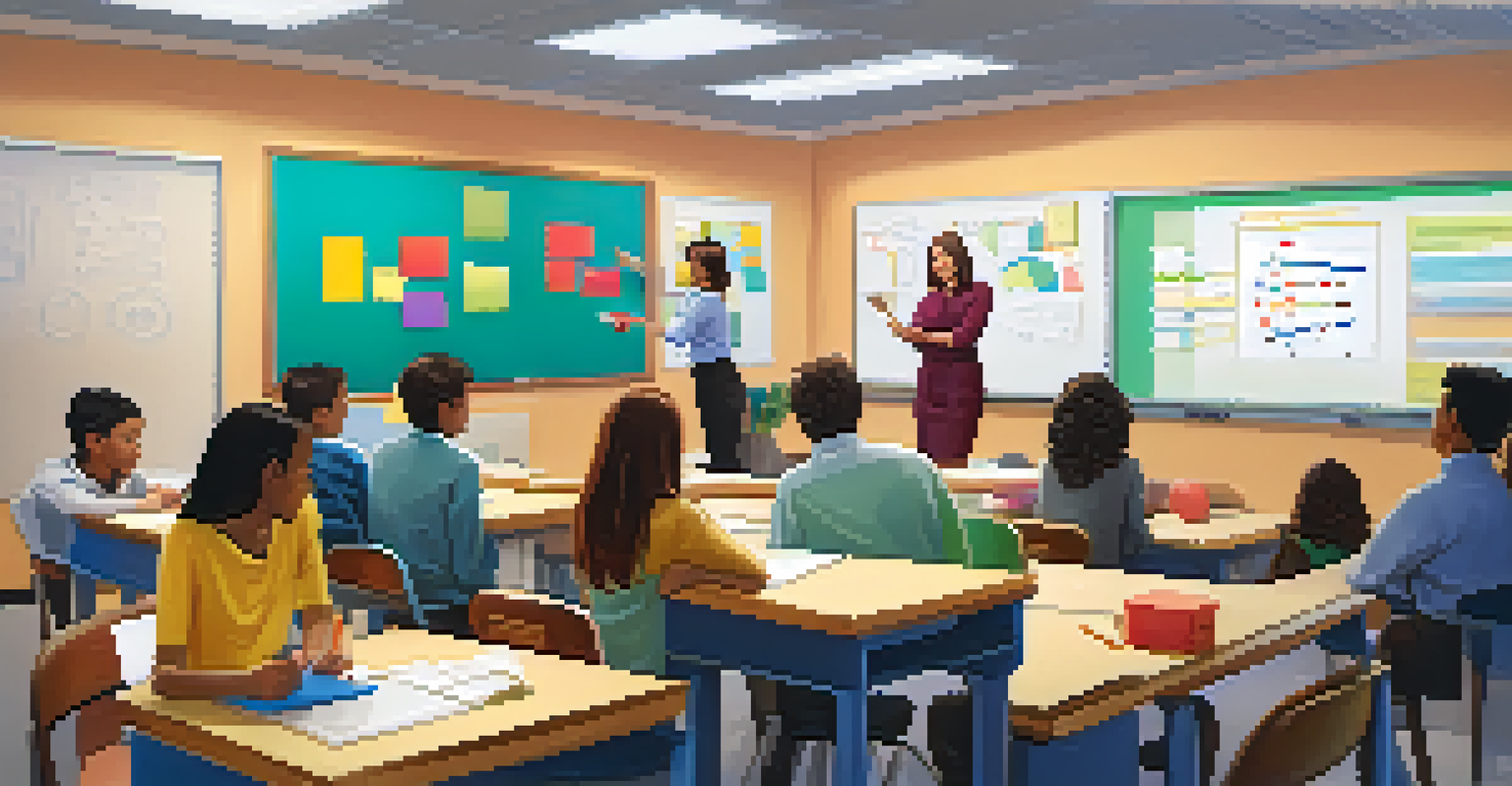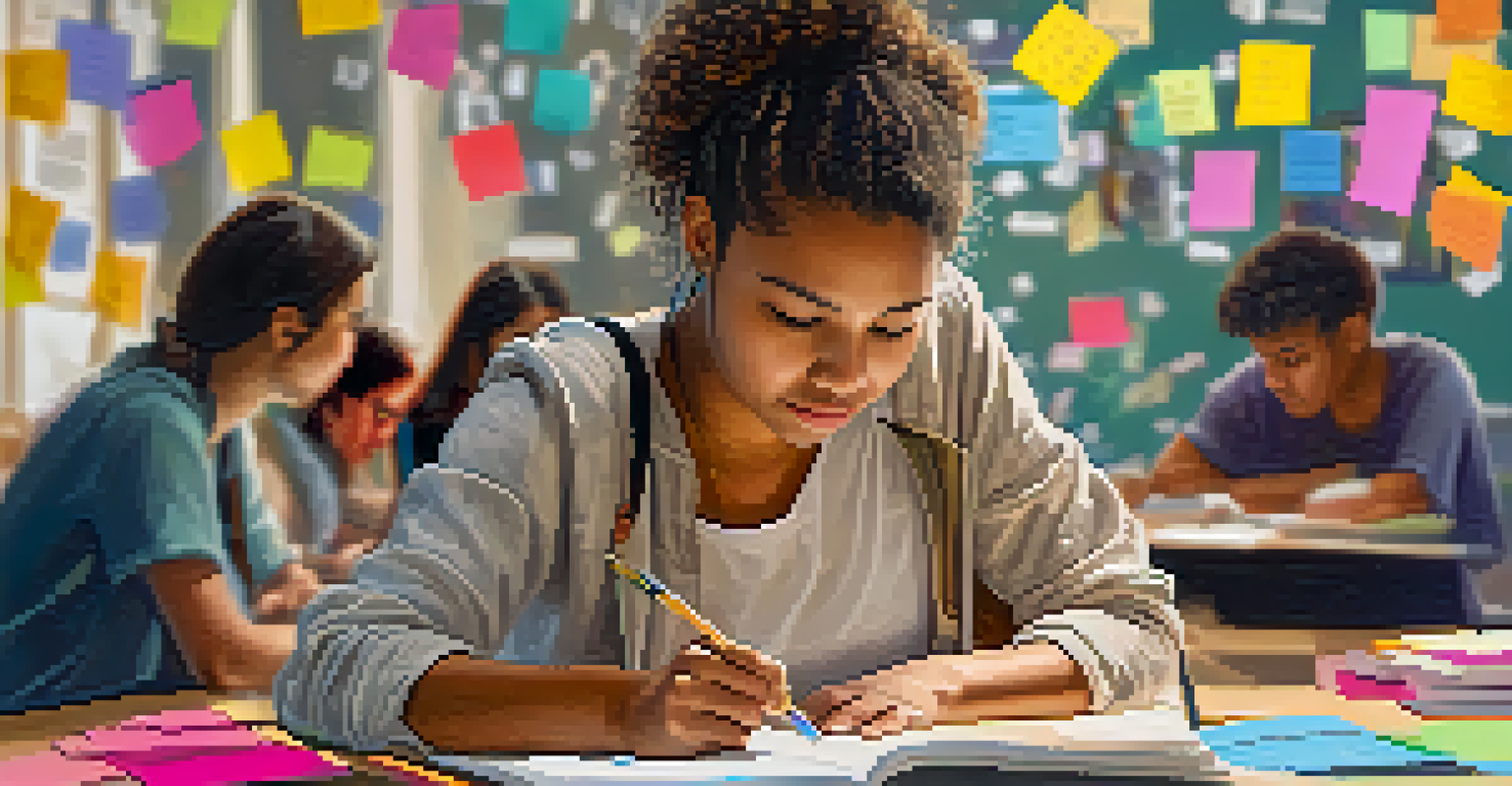Creating a Collaborative Learning Community in Schools

Understanding Collaborative Learning and Its Benefits
Collaborative learning is an educational approach that emphasizes teamwork and shared goals among students. This method encourages students to work together to solve problems, exchange ideas, and build knowledge collectively. By fostering a sense of community, collaborative learning promotes critical thinking and enhances communication skills.
Alone we can do so little; together we can do so much.
The benefits of this approach extend beyond academic performance; they also include improved social skills and emotional intelligence. Students learn to respect diverse viewpoints and develop empathy, which are essential skills for their future interactions. This sense of belonging can significantly boost their confidence and motivation.
Moreover, collaborative learning prepares students for real-world scenarios, where teamwork is often crucial. In workplaces, individuals must collaborate effectively to achieve common goals. By incorporating collaborative learning into the classroom, educators are equipping students with the tools they need for success in their future careers.
Creating a Safe and Inclusive Environment
For collaborative learning to thrive, it’s essential to establish a safe and inclusive environment in the classroom. Students should feel comfortable expressing their thoughts without fear of judgment. One way to achieve this is by setting clear guidelines and expectations that promote respect and active listening.

Inclusion is key—ensuring that every student feels valued and heard. Teachers can facilitate this by encouraging diverse group formations that mix students with different backgrounds, abilities, and perspectives. This diversity enriches discussions and fosters a deeper understanding of the subject matter.
Benefits of Collaborative Learning
Collaborative learning enhances teamwork, critical thinking, and communication skills while fostering social skills and emotional intelligence.
Additionally, creating a physically inviting space can enhance collaboration. Arranging desks in a circle or small clusters encourages interaction and engagement, making it easier for students to work together. When students feel safe and included, they are more likely to participate actively and contribute to group efforts.
Incorporating Technology to Enhance Collaboration
In today’s digital age, technology can play a pivotal role in fostering collaboration among students. Tools like Google Classroom, Microsoft Teams, and various collaborative apps enable students to work together seamlessly, even outside of school hours. These platforms facilitate communication and allow for real-time feedback on projects.
Collaboration allows us to know more than we are capable of knowing by ourselves.
Moreover, technology can bridge gaps for students who may struggle with traditional learning methods. For example, interactive tools can cater to visual and auditory learners, making it easier for all students to engage in group tasks. This adaptability ensures that every student can contribute meaningfully to the learning process.
However, it’s crucial to balance technology use with face-to-face interactions. While digital tools offer convenience, personal connections are still vital for developing strong collaborative skills. Encouraging students to use technology as a supplement to in-person discussions can lead to a more enriched learning experience.
Setting Clear Goals for Collaborative Projects
Establishing clear goals is essential for the success of collaborative projects. When students understand the objectives and outcomes expected of them, they can work more effectively as a team. Goals provide direction and help students stay focused on their tasks, ensuring that everyone is contributing towards a common purpose.
Involving students in the goal-setting process can also enhance their investment in the project. By allowing them to voice their ideas and aspirations, educators give students ownership of their learning. This sense of responsibility can motivate students to engage actively and take pride in their contributions.
Creating an Inclusive Environment
A safe and inclusive classroom encourages diverse perspectives, allowing all students to feel valued and actively participate.
Additionally, breaking down larger goals into smaller, manageable tasks can help students stay organized and lessen feelings of overwhelm. This approach allows for continuous progress tracking, giving students a sense of achievement as they complete each step. Celebrating these small wins can further reinforce their commitment to the project.
Encouraging Reflective Practices in Group Work
Reflection is a powerful tool for enhancing collaborative learning experiences. Encouraging students to reflect on their group work helps them identify strengths, weaknesses, and areas for improvement. This practice not only fosters self-awareness but also promotes a growth mindset among learners.
Teachers can facilitate reflection by incorporating structured activities, such as group discussions or written journals. Asking guiding questions—like what worked well and what could be improved—can lead to deeper insights and valuable takeaways for future collaborations. When students understand their roles and contributions, they become more effective collaborators.
Furthermore, sharing reflections among groups can stimulate cross-pollination of ideas. When students learn from each other's experiences, they can adopt successful strategies and avoid common pitfalls. This sharing of knowledge reinforces the collaborative spirit and enhances the overall learning community.
Fostering Peer Accountability and Support
Peer accountability is crucial in collaborative learning environments, as it encourages students to take responsibility for their contributions. When students know they are accountable to their peers, they are more likely to engage actively and complete their tasks. This sense of responsibility can enhance the quality of group work and ensure that everyone participates fully.
Creating a supportive atmosphere where students encourage one another can further strengthen this sense of accountability. Teachers can foster this by modeling positive reinforcement and celebrating group successes. When students feel supported, they are more likely to share ideas freely and take risks in their learning.
Reflecting on Group Work Success
Encouraging reflection on group experiences helps students identify strengths and areas for improvement, fostering a growth mindset.
Additionally, incorporating peer reviews can help students provide constructive feedback to one another. This process not only enhances their critical thinking skills but also allows them to learn from different perspectives. By fostering peer accountability and support, educators can cultivate a collaborative learning community where every student thrives.
Evaluating the Effectiveness of Collaborative Learning
Evaluating the effectiveness of collaborative learning initiatives is essential for continuous improvement. Educators should assess not only the academic outcomes but also the interpersonal skills developed through collaboration. Surveys, interviews, and feedback sessions can provide valuable insights into students' experiences.
Setting specific criteria for evaluation can help measure success objectively. For instance, assessing group dynamics, communication skills, and individual participation can highlight areas where students excelled or struggled. This data can inform future implementations, ensuring that collaborative learning remains effective and relevant.

Moreover, sharing evaluation results with students fosters transparency and encourages them to take ownership of their learning journey. When students see the impact of their collaborative efforts, they are more likely to remain engaged and committed to continuous improvement. This cycle of evaluation and reflection ultimately leads to a more robust collaborative learning community.